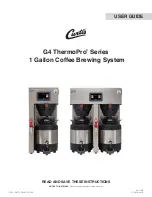
www.lifebreath.com
4
1
C
ONTROLLING
Y
OUR
HRV
T
oday’s modern, tight buildings require fresh outdoor air to maintain a healthy indoor air
environment. The amount of ventilation you require in the building will depend upon:
•
The number of occupants and their activity levels
•
The way the building was built
•
Your personal preferences for fresh air
A Heat Recovery Ventilator (HRV) is an air to air energy exchanger found in modern, energy efficient
homes. Due to the tight construction of new homes, your home can no longer “breathe” on its own.
An HRV allows for fresh air exchange by exhausting stale indoor air and supplying an equal volume of
fresh air from outside, ensuring high quality indoor air year-round. An HRV will transfer a high
percentage of heat to the cooler air stream lessening the load on your heating and cooling
appliances.
An HRV that is properly installed, operated, and maintained will:
•
Exhaust stale, contaminated air
•
Recover most of the energy from the exhausted stale air
•
Use the recovered energy to preheat or precool outside air that is drawn into the building
•
Distribute the fresh air throughout the building
•
Mitigate high indoor humidity during the cooler winter months of the year by exchanging the
humid indoor air with the dryer air from outside.
•
Automatically cycles through its defrost mode when temperatures drop below freezing to avoid
frost build up in the core
Each time the HRV is powered/energized, the self-test function automatically initiates. The unit cycles
through the available speeds and tests the damper motor operation. The unit resumes operations at
the selected mode and speed (approximately 60 seconds in duration).
Optional timers may be installed at specific exhaust locations (i.e. bathroom) to initiate high speed
ventilation.
During seasons when your windows and doors are closed (winter, and summer if air conditioned),
the HRV should be set to operate continuously on low speed with the option of going to high speed
as the need arises. For example, if you are entertaining and there are several people present, the
unit should be switched temporarily to high speed.
HRV Setting
Description
Result
Standby (fan speed set to 0 or OFF) Allows unit to run on demand from remote controls such
as a timer or dehumidistat.
Good
Intermittent low speed operation 20
ON / 40 OFF
Provides 20 minutes air exchange and 40 minutes off.
Better
Continuous LOW fan speed
operation
Ensures continuous air exchange within the building. Air
is always fresh and healthy.
Best





































